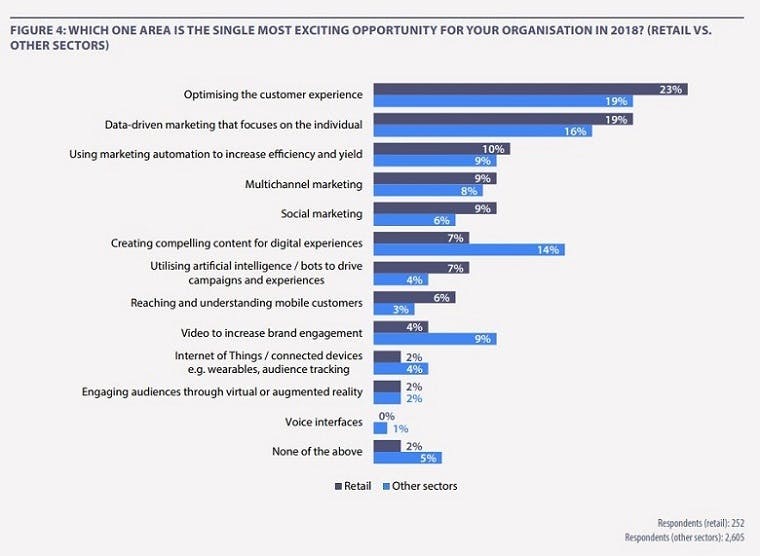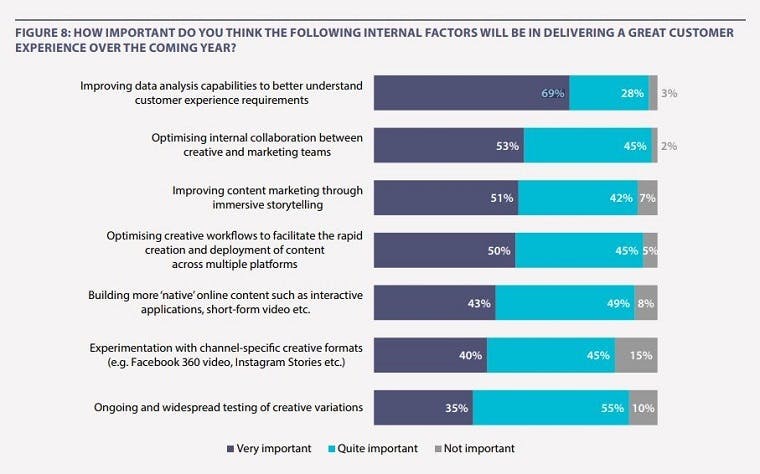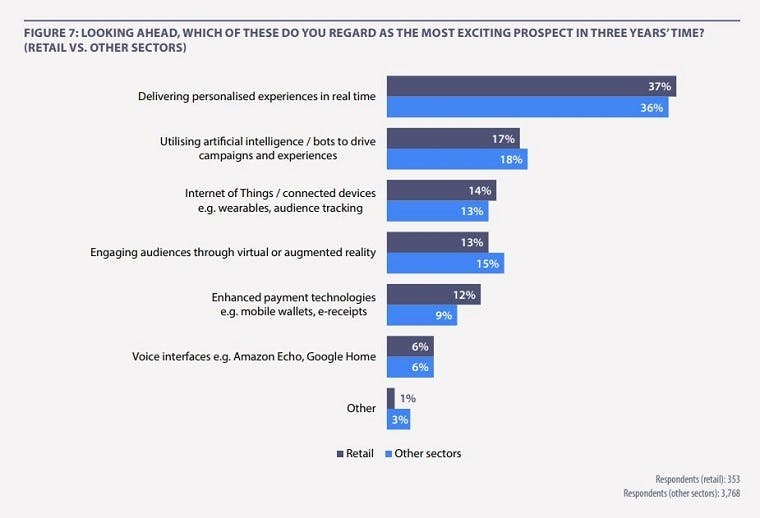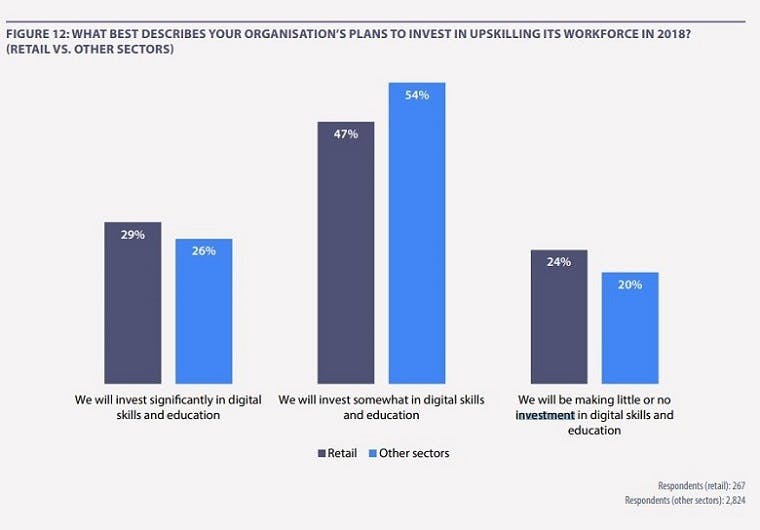This is just one of the most interesting takeaways from Adobe’s 2018 Digital Trends in Retail report, which comes from a survey of 600 senior retail leaders.
So, why are retailers suddenly so excited about data strategies? Here’s more on that, plus a few more snippets from the report.
A data-driven mindset
It is clear that many retailers are starting to realise how data-driven strategies can set them apart from the competition.
However, while there has been a marked increase in the number of retailers citing it as an exciting opportunity, this also tells us that it is perhaps still an aspiration rather than a reality.
So, how do retailers bring this vision to fruition?
Internal capabilities are certainly a big part, with roles ranging from chief data officers to web analysts being key for data-focused companies.
Additionally, internal training is important, as is a ‘data-led mindset’, with leading companies now making this a company-wide and cultural change rather than a team-specific one.

Data to enhance CX
Another motivation for improving data analysis capabilities is to better understand the customer’s needs. 69% of retailers cited this as a ‘very important’ factor in delivering a great CX.
It comes above and beyond other factors, such as the 53% that said the same about optimising internal collaboration between creative and marketing teams, and the 51% that cited improving content marketing through immersive storytelling.
Interestingly, even when retailers aren’t explicitly referencing data, it’s still key to over-arching priorities. For example, targeting and personalisation lead the way in both North America and Europe as the top digital-related priorities for 2018.

Real-time experiences
Looking ahead, the report suggests that retailers are increasingly thinking about targeting ‘in-the-moment’ rather than based on past behaviour. 37% of retailers cite real-time personalised experiences as the most exciting prospect in three years’ time, with companies seemingly ready to embrace predictive analytics to help convert prospects into customers.
Next up on this list is artificial intelligence to drive campaigns and experiences which, technically, can also be viewed as real-time personalisation. Machine learning can help retailers analyse vast quantities of data to provide relevant content and recommendations to consumers.

Ongoing investment
Finally, the report suggests that ongoing investment in technology and marketing will be key to future success.
As the lines between offline and online channels continue to blur, brands that neglect investment in integrated digital marketing run the risk of creating a disconnect between themselves and the consumer – regardless of perceived loyalty.
Research suggests both good and bad news. Positively, 73% of respondents said they plan to increase digital marketing spending during 2018 – a higher percentage than the average across all sectors.
However, 24% of retailers will be ‘making little or no investment’ in upskilling their staff, which – despite previous spend in this area – means many might lag behind the competition in the long run.

Subscribers can download the 2018 Digital Trends in Retail report now.

Comments